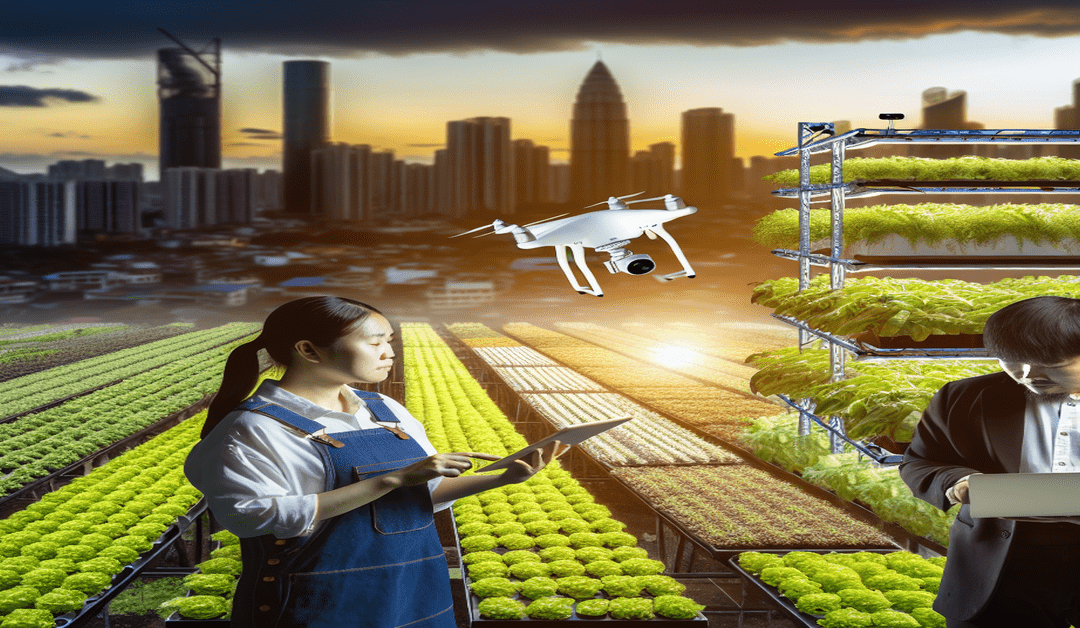Agriculture Analytics: Revolutionizing the Future of Farming
In recent years, the agriculture industry has witnessed a significant shift towards data-driven decision-making, and the agriculture analytics market is at the forefront of this transformation. With the integration of cutting-edge technologies like artificial intelligence (AI) and big data, farmers and agribusinesses are unlocking unprecedented opportunities to optimize their operations, enhance productivity, and ensure the sustainability of their crops. As the world faces the challenges of feeding a growing population while navigating the complexities of climate change, the agriculture analytics market is gaining unprecedented momentum, promising to revolutionize the way we approach farming in the 21st century.
Key Trends and Drivers: AI, Big Data, and Precision Farming
One of the most significant trends driving the growth of the agriculture analytics market is the **integration of AI and big data**. By leveraging these powerful technologies, farmers can gain valuable insights into their crops, soil health, and weather patterns, enabling them to make informed decisions that optimize resource allocation and protect their crops from environmental stress. AI algorithms can analyze vast amounts of data from sensors, drones, and satellite imagery, providing real-time monitoring and predictive analytics that help farmers anticipate and mitigate potential risks[2].
Moreover, the increasing emphasis on **precision farming and sustainability** is further fueling the demand for agriculture analytics. Precision farming involves the use of advanced technologies to manage crops and livestock with pinpoint accuracy, minimizing waste and maximizing yields. By employing data analytics, farmers can identify the specific needs of each plant or animal, tailoring their management practices accordingly. This not only improves the efficiency of farming operations but also contributes to the overall sustainability of the industry by reducing the use of water, fertilizers, and pesticides[2].
Urban and Vertical Farming: The Next Frontier
Another exciting trend that is boosting the agriculture analytics market is the rise of **urban and vertical farming**. As cities continue to grow and land becomes increasingly scarce, innovative farming methods are emerging to meet the demands of urban populations. Urban and vertical farming involve growing crops in controlled environments, often using hydroponic or aeroponic systems, where every aspect of the growing process is carefully monitored and optimized[2][4].
These high-tech farming methods rely heavily on data analytics to ensure the optimal growth and health of the crops. Sensors and IoT devices collect real-time data on factors such as temperature, humidity, light levels, and nutrient levels, which are then analyzed by AI algorithms to make precise adjustments to the growing environment. By leveraging agriculture analytics, urban and vertical farmers can achieve higher yields, faster growth cycles, and year-round production, even in the most space-constrained settings[4].
Market Segmentation: Diverse Applications and Deployment Models
The agriculture analytics market is segmented into various components, deployment models, and applications, catering to the diverse needs of the industry. In terms of components, the market is divided into solutions and services, with solutions encompassing software platforms and tools that enable data collection, analysis, and visualization[2][4].
Deployment models include both on-premise and cloud-based options, allowing farmers and agribusinesses to choose the approach that best suits their infrastructure and security requirements. Cloud-based deployments are gaining popularity due to their scalability, flexibility, and cost-effectiveness, enabling even small-scale farmers to access advanced analytics capabilities[2][4].
The applications of agriculture analytics are wide-ranging, covering farm analytics, livestock analytics, aquaculture analytics, and more. Farm analytics focuses on optimizing crop production, soil management, and resource utilization, while livestock analytics helps farmers monitor the health, nutrition, and performance of their animals. Aquaculture analytics, on the other hand, assists in managing fish farms, monitoring water quality, and optimizing feed management[2][4].
Regional Growth: North America Leads the Way
Geographically, the agriculture analytics market is witnessing significant growth across various regions. North America currently dominates the market, driven by the early adoption of advanced technologies and the presence of major players in the region. The United States, in particular, has been at the forefront of embracing precision farming techniques and leveraging data analytics to improve agricultural productivity[2][5].
However, the Asia Pacific region is expected to achieve the fastest growth in the coming years, fueled by rapid urbanization, population growth, and the increasing demand for food security. Countries like China and India are investing heavily in agriculture technology, recognizing the potential of analytics to transform their farming practices and meet the needs of their burgeoning populations[5].
Europe and other regions are also experiencing notable growth in the agriculture analytics market, driven by government initiatives to promote sustainable farming practices and the rising demand for high-quality, traceable food products. The European Union’s Common Agricultural Policy (CAP) has been instrumental in encouraging farmers to adopt precision farming techniques and embrace data-driven decision-making[1][5].
Key Players: Driving Innovation and Market Growth
The agriculture analytics market is characterized by the presence of several key players who are driving innovation and shaping the future of the industry. Companies like **Deere & Company**, **IBM Corporation**, **SAP SE**, **Trimble**, **Accenture**, and **Oracle Corporation** are at the forefront of developing advanced analytics solutions tailored to the unique needs of the agriculture sector[1][3][4].
These companies are investing heavily in research and development, collaborating with farmers, and leveraging their expertise in data science and AI to create powerful tools that enable precision farming, predictive maintenance, and supply chain optimization. By partnering with these industry leaders, farmers and agribusinesses can gain access to cutting-edge technologies and insights that help them stay competitive in an increasingly data-driven landscape[3].
Challenges and Opportunities: Overcoming Barriers to Adoption
Despite the immense potential of agriculture analytics, the market faces certain challenges that need to be addressed. One of the most significant barriers to adoption is the **high investment costs** associated with implementing advanced analytics solutions. Many farmers, especially those in developing countries or small-scale operations, may find it difficult to justify the upfront expenses required to deploy sensors, drones, and other data collection devices[1].
However, the **growing demand for food**, driven by the increasing global population, presents a compelling opportunity for the agriculture analytics market. As the pressure to produce more food with limited resources intensifies, farmers and agribusinesses are recognizing the value of data-driven insights in optimizing their operations and ensuring long-term sustainability. By leveraging agriculture analytics, they can make informed decisions that help them maximize yields, minimize waste, and adapt to changing climate conditions[1][3].
Conclusion: Embracing the Data-Driven Future of Agriculture
The agriculture analytics market is poised for unprecedented growth in the coming years, driven by the integration of AI, big data, and precision farming techniques. As the world grapples with the challenges of feeding a growing population while preserving natural resources, the adoption of data-driven decision-making in agriculture has become more critical than ever.
By embracing agriculture analytics, farmers and agribusinesses can unlock new levels of efficiency, sustainability, and profitability. From optimizing crop yields and resource utilization to ensuring the health and well-being of livestock, the applications of analytics in agriculture are vast and transformative.
As the market continues to evolve, it is essential for stakeholders across the agriculture value chain to collaborate, share knowledge, and invest in the development of innovative solutions. By working together to overcome the challenges and seize the opportunities presented by agriculture analytics, we can build a more resilient, sustainable, and data-driven future for the industry.
So, whether you are a farmer, an agribusiness executive, or simply someone who cares about the future of food production, now is the time to engage with the agriculture analytics market. Share your thoughts, experiences, and insights in the comments below, and let’s continue the conversation about how data can transform the way we feed the world.
#AgricultureAnalytics #PrecisionFarming #DataDrivenAgriculture
-> Original article and inspiration provided by ReviewAgent.ai
-> Connect with one of our AI Strategists today at ReviewAgent.ai

